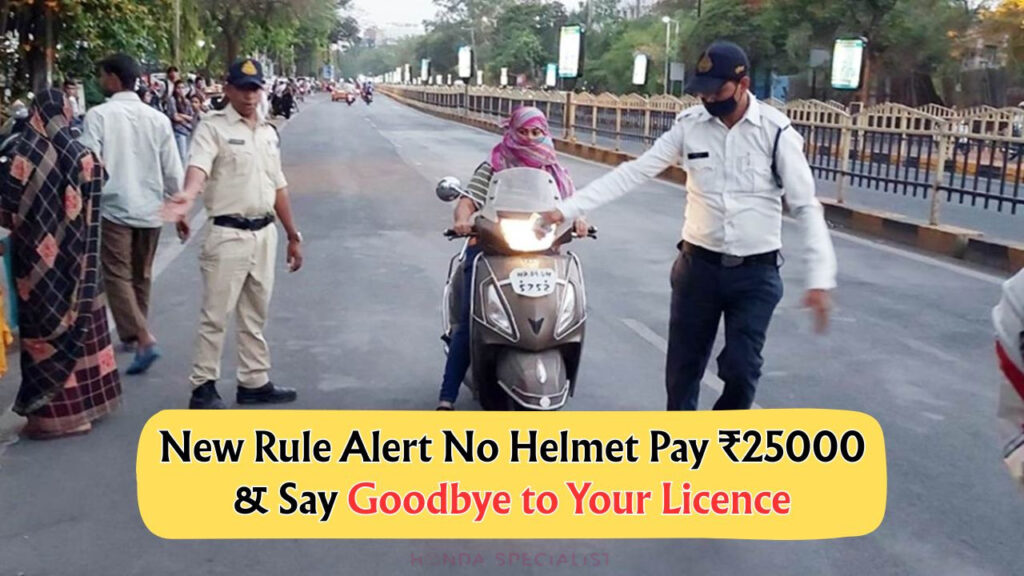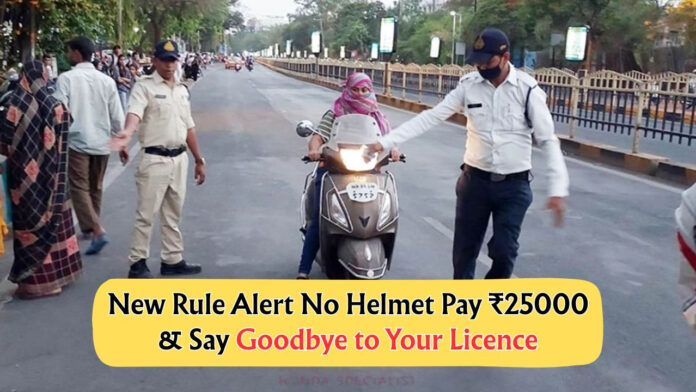
New Traffic Regulation for Scooty Riders: Helmet Rule from July 10
In a decisive move to boost road safety and lower accident-related deaths, the Indian government will enforce a strict new traffic rule starting July 10. Under this rule, scooty riders caught without wearing a helmet will be fined ₹25,000, and their driving licence will be blacklisted. This tough measure is intended to promote responsible riding habits and tackle the growing number of head injuries in road mishaps.
Key Highlights of the Rule:
- The regulation aims to strengthen road safety protocols across the country.
- The steep ₹25,000 fine serves as a deterrent to riders ignoring helmet usage.
- Licence blacklisting will restrict the offender’s ability to drive legally in the future.
- The rule applies uniformly to both urban and rural areas across India.
- Traffic police and enforcement teams will carry out frequent inspections to ensure adherence.
- No prior warnings will be given—first-time violators will face full penalties immediately.
Why Helmets are Critical
Impact of the ₹25,000 Fine
The financial impact of a ₹25,000 fine is significant for most scooty riders in India, especially for those who rely on their vehicles for daily commuting. This rule is expected to influence the behavior of riders, pushing them towards habitual helmet usage. By imposing such a substantial fine, authorities intend to create a strong deterrent against non-compliance. The rule not only aims to protect riders but also to ease the burden on healthcare services by reducing accident-related injuries.
- Helmets are proven to reduce the risk of head injuries by up to 70%.
- In 2019, over 37% of road fatalities in India involved two-wheelers.
- The cost of a standard helmet ranges from ₹500 to ₹2000, making it a cost-effective safety measure.
- Insurance companies may also start demanding stricter adherence to safety norms for policyholders.
- Local governments may initiate awareness campaigns to educate riders on the importance of helmet use.
- Schools and colleges might incorporate road safety education as part of their curriculum to instill safe habits from a young age.
- Community leaders could play a role in advocating for helmet usage in their respective areas.
Comparative Analysis of Traffic Rules
To understand the effectiveness of the new rule, it’s useful to compare it with traffic regulations in other countries. In many Western nations, helmet laws are strictly enforced, with penalties including fines and points on the driver’s licence. For instance, in the UK, failing to wear a helmet can result in a fine and penalty points. In Australia, the enforcement of helmet laws has significantly reduced motorcycle fatalities over the years. Such comparisons highlight the potential benefits India might reap from the new regulation.
| Country | Helmet Law | Fine Amount | Impact |
|---|---|---|---|
| India | Mandatory | ₹25,000 | Licence blacklisting |
| UK | Mandatory | £100 | Penalty points |
| Australia | Mandatory | AUD 300 | Reduced fatalities |
| USA (varies by state) | Partial | ~$50 | Varied impact |
| Germany | Mandatory | €60 | High compliance |
| Italy | Mandatory | €80 | Moderate compliance |
| Japan | Mandatory | ¥10,000 | High compliance |
Steps to Ensure Compliance
Role of Authorities
- Enhanced Monitoring
- Regular patrolling by traffic police at key junctions and roads.
- Installation of CCTV cameras to capture violations.
- Collaboration with local communities to spread awareness.
Authorities will play a crucial role in enforcing the new rule. Their active involvement will ensure that the regulation is not just on paper but is implemented effectively on the ground. Regular monitoring and patrolling will be essential in high-traffic areas, where violations are more likely. In addition, technology like CCTV cameras will aid in identifying offenders and ensuring they are held accountable. Community involvement is also vital, as local leaders can help in spreading the message and promoting compliance among residents.
Public Awareness Campaigns
Public awareness campaigns will be critical in ensuring the success of the new traffic rule. These campaigns will aim to educate the public about the dangers of not wearing a helmet and the penalties involved. Through various media outlets, including television, radio, and social media, the message can reach a broad audience. Road safety workshops and seminars can also be organized, particularly in educational institutions, to instill a culture of safety among young riders.
- Media Outreach
- Collaboration with influencers and celebrities to promote helmet usage.
- Distribution of informational pamphlets in local languages.
- Hosting of road safety workshops in schools and colleges.
- Involvement of NGOs to reach remote and rural areas.
Through strategic media outreach, the importance of helmet usage can be effectively communicated. Influencers and celebrities can be roped in to endorse the cause, making it resonate with a wider audience. Additionally, creating content in local languages will ensure that the message reaches diverse populations across India. Workshops and seminars in educational institutions will help inculcate road safety habits early in life. NGOs can play a pivotal role in reaching marginalized communities and ensuring that they too are informed about the new rule.
Challenges and Solutions
Addressing Resistance
Overcoming Barriers
The implementation of the new traffic rule is not without challenges. Resistance from the public, especially in regions where helmet usage is not the norm, is expected. To address this, authorities must focus on creating awareness about the life-saving benefits of helmets. Additionally, there might be logistical challenges in ensuring that affordable helmets are available to all. Collaborating with manufacturers to provide cost-effective options could be a solution. Through persistent efforts and community engagement, these barriers can be overcome.
Ensuring Availability
Incentives for Compliance
Long-term Benefits
Ensuring the availability of helmets at affordable prices is crucial for compliance. Authorities could work with manufacturers to subsidize costs or offer discounts, making helmets more accessible. Providing incentives for compliance, such as reduced insurance premiums for riders who consistently wear helmets, could also encourage adherence to the rule. In the long term, these measures are expected to not only save lives but also reduce the economic burden of road accidents on the healthcare system.
FAQs
What is the new traffic rule for scooty riders?
The new rule mandates that scooty riders wear helmets, failing which they face a ₹25,000 fine and licence blacklisting.
When does the rule come into effect?
The rule will be enforced starting July 10.
Why is the fine set at ₹25,000?
The substantial fine is intended to deter non-compliance and promote safety.
How will the rule be enforced?
Authorities will conduct regular checks, use CCTV cameras, and engage communities in awareness campaigns to ensure compliance.
Are there any exceptions to the rule?
Currently, there are no exceptions; all scooty riders must adhere to the helmet mandate.

